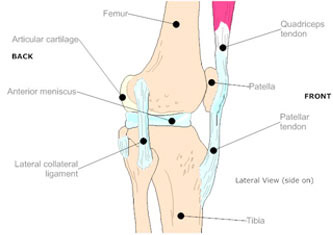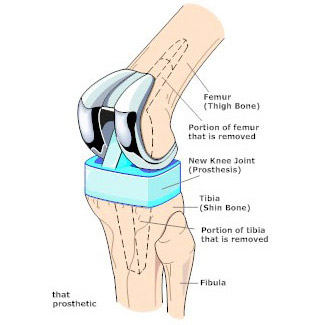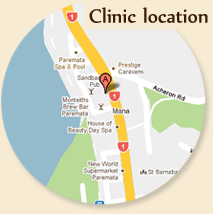Ankle Replacement Surgery Procedure - Mr Nigel Willis
Introduction
This information, compiled by Nigel Willis, is designed to ensure that you understand what is involved with your upcoming ankle replacement surgery and what to expect before, during and after the procedure. Understanding and following these instructions is paramount in order to maximise the benefits of surgery. Mr Willis, physiotherapists and nurses will help further educate you on all matters relating to the procedure.
There are potential complications that may occur during or after ankle replacement surgery, however Mr Willis will inform you about these prior to you agreeing to undergo the procedure. Being an elective procedure means that you can choose not to have it performed if you are not willing to accept the risks involved. Rather than undergoing surgery, you may choose to continue with conservative (non-operative) treatment of your condition.
-
What is total ankle replacement?
Total ankle replacement surgery, known as prosthesis, is a complex procedure that involves the replacement of the natural surfaces of the ankle joint. It is most commonly performed on patients suffering from advanced ankle osteoarthritis, post injury problems or rheumatoid arthritis. The aim of an ankle replacement is to eradicate persistent pain and preserve ankle mobility.
The ankle is a particularly complex joint to replace because it needs to flex and rotate and due to its size and shape, the ankle receives more strain than any other joint in the body. However the new generation of total ankle replacements integrate much more effectively into the ankle joint with much improved results.
Ankle replacement is an alternative to ankle fusion or ankle stiffening. Both of these procedures are alleviate pain and discomfort. Ankle replacement offers this as well as allowing a patient to maintain reasonable range of ankle movement following surgery.
Why the procedure is performed
Ankle replacement surgery is often performed if the ankle joint is severely damaged. Your symptoms may be pain and loss of movement of the ankle. Some causes of damage are:
- • Osteoarthritis
- • Rheumatoid arthritis
- • Bone fracture
- • Arthritis caused by ankle surgery in the past
-
Is total ankle replacement for me?
If you are suffering from pain or discomfort in your ankle while resting or it is preventing you from doing normal daily activities, then ankle replacement surgery might be the most suitable solution for you.
This is a major procedure which is only considered for patients with advanced osteoarthritis or rheumatoid arthritis or severe damage to the joints following trauma. Ankle replacement surgery is best suited to patients aged over 70 because their ankles are often placed under less stress than a younger person.
Ankle joint replacement is a relatively new procedure and unfortunately there is no scientific evidence to suggest that one will last more than 10 years. Some younger patients have had good results from this type of surgery, but it is suggested that active people consider ankle fusion surgery as a more appropriate alternative.
-
The surgical procedure
Before surgery you will be placed under either general anesthesia or a spinal type of anesthesia.
The orthopaedic surgeon begins the operation by making an incision through the skin on the front of the ankle. Once through the skin, the nerves and blood vessels are protected and moved to the side. The tendons are also moved to the side. An incision is then made into the joint capsule that encloses the ankle joint. The surgeon opens the joint and replaces both natural surfaces of the ankle joint with a combination of metal and plastic. The materials used in this procedure are quite similar to those used for hip and knee replacements and have demonstrated long term physiological biocompatibility.
-
Risks & complications of the procedure
As with all major surgical procedures, complications can occur. This information doesn't provide a complete list of the possible complications, but it does highlight some of the most common problems. Some of the most common complications following artificial ankle replacement are:
Anesthesia
Problems can arise when the anesthesia given during surgery causes a reaction with other drugs the patient is taking. In rare cases, a patient may have problems with the anesthesia itself. In addition, anesthesia can affect lung function because the lungs don't expand as well while a person is under anesthesia. Be sure to discuss the risks and your concerns with your anesthesiologist.
Infection
Infection can be a very serious complication following an artificial joint surgery. The chance of getting an infection following artificial ankle replacement is probably two to four percent. This is somewhat higher than the risk of infection after a hip or knee replacement.
Some infections may show up very early, even before you leave the hospital. Others may not become apparent for months, or even years, after the operation. Infection can spread into the artificial joint from other infected areas. Your surgeon may want to make sure that you take antibiotics when you have dental work or surgical procedures on your bladder or colon to reduce the risk of spreading germs to the joint.
Loosening
The major reason that artificial joints eventually fail continues to be a process of loosening of the metal or cement from the bone. Great advances have been made in extending how long an artificial joint will last, but most will eventually loosen and require a revision.
In the past, the artificial ankle has not been considered as successful as the hip and knee replacement. The artificial ankle replacement has a much higher risk of loosening and failure. Many have lasted only five to eight years. The risk of loosening is much higher in younger, more active patients and patients who are overweight. A loose prosthesis is a problem because it causes pain. Once the pain becomes unbearable, another operation will probably be required to either revise the ankle replacement or perform an ankle fusion.
Nerve Injury
All of the nerves and blood vessels that go to the foot travel across the ankle joint. Since the operation is performed so close to these important structures, it is possible to injure either the nerves or the blood vessels during surgery. The result may be temporary if the nerves have been stretched by retractors holding them out of the way. It is rare to have permanent injury to either the nerves or the blood vessels, but it is possible.
-
What happens after surgery?
After surgery, you will be required to wear a cast and may be permitted to walk if the surgeon deems this to be appropriate. In most cases, crutches will be required for 4 – 6 weeks after the operation date.
X-rays will be taken several times after your surgery to make sure that the artificial joint has not moved out of place and that the fusion between the fibula and the tibia is forming.
Recovery from ankle replacement surgery takes up to three months. When you begin physiotherapy, your therapist will check to make sure you are using your walker or crutches safely and that you are placing only the right amount of weight on your foot.
The first few physiotherapy treatments will focus on controlling the pain and swelling from surgery. Heat treatments may be used. Your therapist may also use gentle massage and other hands-on treatments to ease muscle spasm and pain.
Range-of-motion exercises are used to maximize the mobility of the new ankle joint. Strengthening exercises help improve stability around the joint. As with any surgery, you need to avoid doing too much, too quickly.
Please note that this orthopaedic surgery procedure is elective (you can choose to have this surgery or not). The decision to choose surgery is made at the end of a thorough consultative process between you, your othopaedic surgeon and where required, other medical specialists.
It is very rare where two people have exactly the same issue, so each procedure and post-surgery treatment is specifically diagnosed and tailored to your individual requirements.
Therefore, the information provided here is for general advice only and is not a substitute for a consultation appointment with your orthopaedic surgeon.
For consultations with Mr Nigel Willis, please ask your GP for a referral.





